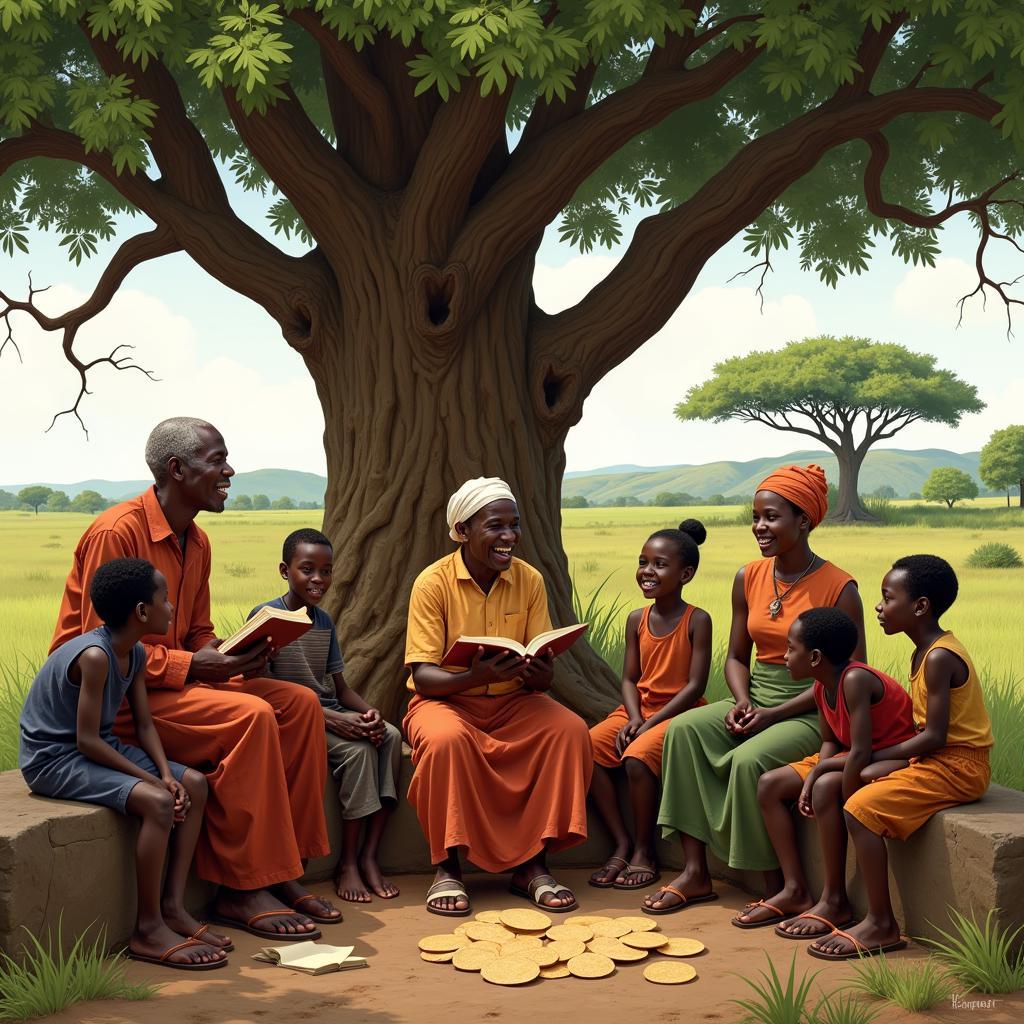A Colorful Journey Through Time: Exploring African Beads History
From ancient civilizations to modern fashion runways, African beads have adorned humanity for millennia, whispering tales of tradition, artistry, and cultural evolution. These tiny artifacts, meticulously crafted from bone, clay, glass, and precious stones, hold within them a vibrant history that spans across the diverse tapestry of the African continent.
The Dawn of Adornment: Uncovering the Origins of African Beads
Archaeological discoveries unveil the profound antiquity of bead-making in Africa. African bone beads unearthed in Blombos Cave, South Africa, date back an astounding 75,000 years, marking them among the earliest forms of personal adornment known to humankind. These early beads, often fashioned from readily available materials like ostrich eggshells, seeds, and animal bones, showcase the innate human desire for self-expression and creative ingenuity that transcends time and geography.
[Image-1|early-african-beads-blombos-cave|Early African Beads from Blombos Cave|A close-up image showcasing a collection of early African beads excavated from Blombos Cave in South Africa. The beads, made from natural materials like bone and shell, are simple in design but significant for their age, providing evidence of early human adornment and cultural practices.]
More Than Just Decoration: The Symbolic Power of African Beads
As centuries flowed into millennia, African beads evolved beyond mere adornment, becoming powerful symbols imbued with cultural, spiritual, and social significance. Different colors, shapes, and materials took on specific meanings, conveying messages of status, wealth, marital status, and even spiritual beliefs.
For example, red beads, often associated with vitality and courage, held special meaning for warriors in many African cultures. White beads, symbolizing purity and peace, often played a role in spiritual rituals. The intricate language of beads allowed for silent communication, transmitting stories and identities across generations.
[Image-2|african-beads-ceremonial-garments|African Beads in Ceremonial Garments|A captivating image depicting traditional African ceremonial garments adorned with an array of vibrant beads. The image highlights the intricate designs and the use of different colors and materials, emphasizing the cultural and symbolic significance of beads in ceremonial attire.]
Trade and Transformation: How External Influences Shaped African Beadwork
The arrival of traders from distant lands, particularly those traversing the trans-Saharan trade routes, brought with them new materials and techniques that would forever alter the landscape of African beadwork. Glass beads, originating from as far as Venice and the Middle East, arrived in dazzling arrays of colors and finishes, captivating the imaginations of African artisans.
These new materials, often integrated with traditional ones, sparked a surge of creativity, leading to the development of intricate beadwork techniques and designs. This fusion of global influences with indigenous aesthetics resulted in a vibrant tapestry of beadwork traditions, each unique to its specific region and cultural heritage.
The Enduring Legacy of African Beads
Today, African beads continue to hold a place of honor, both as treasured heirlooms and contemporary expressions of cultural pride. From the intricate beadwork of the Maasai people of East Africa to the elaborate beaded crowns of Yoruba royalty in West Africa, the tradition of beadwork thrives, a testament to its enduring legacy.
African beads around waist, incorporated into belts and waist adornments, continue to be powerful symbols of femininity and cultural identity. The use of beads in contemporary African fashion further highlights their versatility, showcasing their ability to seamlessly blend tradition with modern aesthetics.
Frequently Asked Questions About African Beads History
What are the oldest African beads made of?
The oldest African beads discovered are crafted from natural materials like ostrich eggshells, bone, and shell. These early examples of beadwork emphasize the resourcefulness of early humans and their innate desire for self-expression.
What is the cultural significance of African beads?
African beads hold profound cultural significance, serving as more than just decoration. They convey messages about social status, marital status, spiritual beliefs, and cultural identity. Different colors, shapes, and materials hold specific meanings, creating a complex language understood within a particular cultural context.
How did trade influence African beadwork?
Trade played a pivotal role in shaping African beadwork. The introduction of glass beads through trade routes like the trans-Saharan trade route provided African artisans with new materials and techniques. This fusion of global influences with indigenous aesthetics fueled a surge in creativity, leading to the development of intricate beadwork traditions.
Are African beads still used today?
Yes, African beads continue to be used today, both as treasured heirlooms passed down through generations and as contemporary expressions of cultural identity and style. They are incorporated into traditional garments, jewelry, and even modern fashion designs, demonstrating their enduring appeal and versatility.
Where can I learn more about specific African beadwork traditions?
Numerous resources are available to explore specific African beadwork traditions. Museums, cultural centers, and online platforms dedicated to African art and culture offer a wealth of information. Consider exploring resources focusing on the beadwork of specific ethnic groups, such as the Maasai, Yoruba, Zulu, or any other culture that piques your interest.
Unraveling the Threads of Time
The history of African beads is a testament to human creativity, cultural resilience, and the enduring power of art to connect us across time and geography. These tiny artifacts offer a glimpse into the rich tapestry of African history, whispering tales of ancient traditions, global connections, and the enduring spirit of a continent. As we delve into the fascinating world of African beads, we uncover not just beautiful objects but also stories of human ingenuity, cultural exchange, and the enduring power of self-expression.



